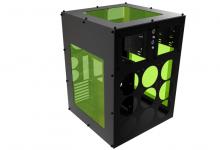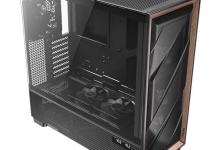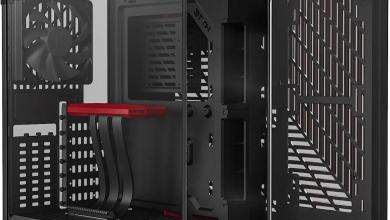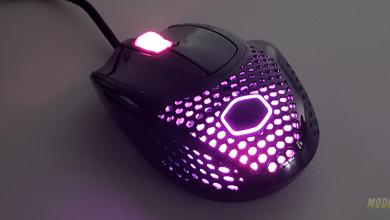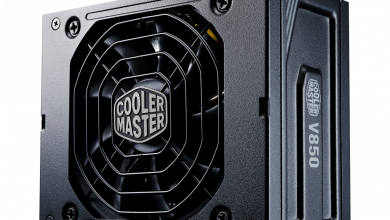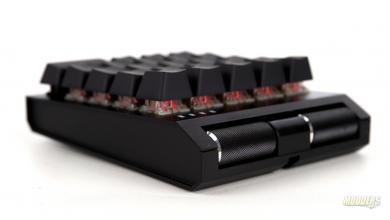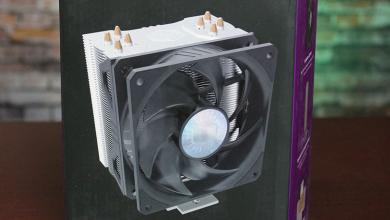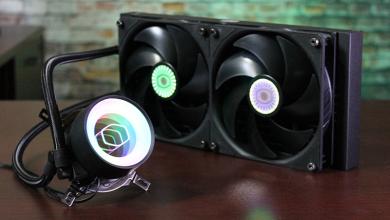Cooler Master Cosmos-S Full Tower Chassis
Observation |
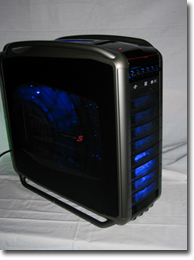 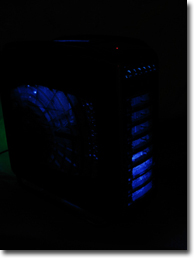 The Cooler Master Cosmos-S carries over the same unique styling that the original Cosmos had with a few modifications to offer better cooling and a sportier look. Although I haven’t installed any special lighting in the Cosmos-S. We can see that a few LEDs will light it up nicely (4 LED fansshown).
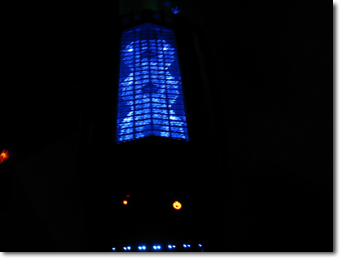 Looking from the top of the case, we can see that the three exhaust fans have very little obstructions to block the exhausting heat. This to me is where the Cosmos-S shines compared to the original Cosmos. The original Cosmos can house a total of five fans, while the Cosmos-S is able to mount a total of seven. Plus the Cosmos-S utilizes a lot of filtered mesh to allow for even more air flow.
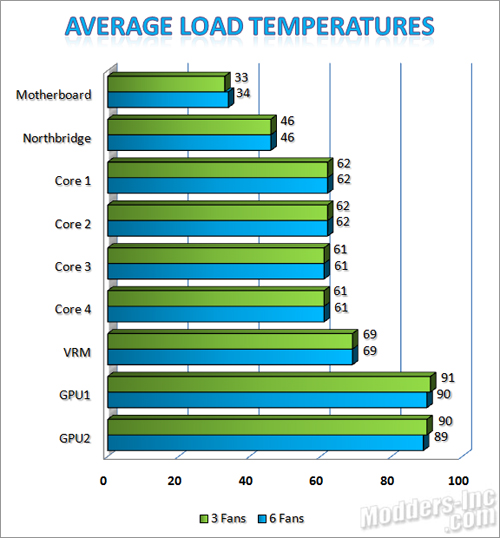
The Test Rig:
Intel Core i7 920 @ 3.6 GHz To do a quick temperature test on the chassis, I loaded up Furmark and Prime 95 for a 15 minute run with only 3 fans operational, and then again with six fans operating. The above graph tells me that the Cosmos-S can achieve optimal airflow with minimal fans installed. Sure we can improve upon those numbers, but it will come at a cost. I am using low RPM fans to semi-control the noise level created. By replacing the stock fans with some higher RPM / CFM fans one should see improved cooling results. Although I didn’t get a chance to graph the results. I originally built the i7 rig in the modded CSX Cosmos case. I simply used it as a place holder to get the i7 up and running, to verify stability and ensure a sound build. I knew from the get go that I wouldn’t be able to do any OCing in the chassis due to the less than steller airflow deisgn. Even after adding two intake fans (one 140mm intake at the front behind the door, and one 120mm lower intake), I was still only able to push things so far. With the same hardware installed, the CPU & GPU at stock clocks, I was able to overheat the system and cause graphic issues with the BFG GTX 295 and with a BFG GTX 280 installed with in about an hours worth of gaming. Being able to simply swap the cases, and OC the build to 3.9 GHz and game endlessly was more than satisfactory. The added airflow is definitely a positive for the Cosmos-S. On the downside though, with all the open mesh on the chassis, the noise side of the scale could become and issue for some. I personally don’t care how loud a case is (with in reason) as long as my hardware is staying at a safe temperature. 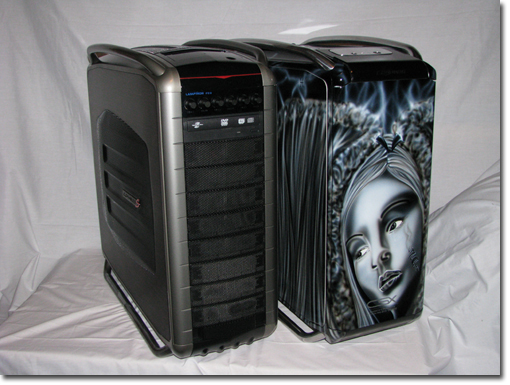 Above we have a shot of the Cosmos-S and the Cosmos CSX Fallen Angel sitting side by side. The resemblance (besides the flashy paint on the CSX) between the two is relatively close. We can see that they both have relatively the same overall size and style, with a few modifications to the top panel, side, and front of the chassis.
|
